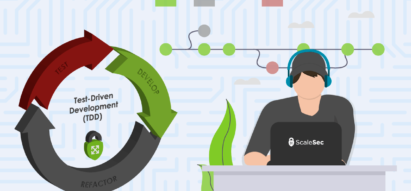The success of any organization largely depends on the quality of its workforce. Hiring the right people can significantly impact teamwork, productivity, and overall organizational success. With over 8 years of management experience, I have learned the importance of refining the hiring process to ensure that we select the best candidates for our team. This article aims to provide a comprehensive guide to my tried and tested hiring process, emphasizing its key aspects and offering valuable insights for organizations looking to improve their recruitment strategy.
1: The Importance of a Great Job Posting
A well-crafted job posting lays the foundation for attracting the right talent. To create an effective job posting, consider including the following elements:
1.1. Role Necessity and Significance Provide a brief two-paragraph explanation of why the role is essential and its importance within the organization. This helps potential candidates understand the value of their contribution and their impact on the company’s success.
1.2. Required Hard Skills Outline the necessary technical skills and knowledge the candidate must possess to excel in the role. Be specific and concise to ensure applicants have a clear understanding of the expertise required.
1.3. Valued Soft Skills List the soft skills your organization values and considers essential for the role, such as communication, problem-solving, or leadership abilities. These skills play a crucial part in determining a candidate’s cultural fit and potential for success within the team.
1.4. Compensation Range or Structure Include a compensation range or structure in your job posting to provide transparency and manage candidate expectations. This helps to attract individuals who are genuinely interested in the position and aligns their expectations with the company’s offerings.
1.5. Necessary Qualifications State any required qualifications, such as education, certifications, or licenses, that are essential for the role. Only list qualifications that are truly necessary to avoid deterring potentially qualified candidates.
1.6. Hiring Process Description Briefly describe the hiring process to give candidates a clear understanding of the steps involved in the recruitment journey. This helps to manage expectations and demonstrates your organization’s commitment to transparency.
1.7. Benefits Highlight the benefits offered by your organization, such as healthcare, retirement plans, or professional development opportunities. These benefits can be a significant motivator for potential candidates and play a vital role in attracting top talent.
1.8. Additional Information Include any additional information relevant to the role, such as relocation assistance, work permit requirements, security clearance levels, or other pertinent details.
Remember, a great job posting is concise, clear, and focused on the most critical aspects of the role.
2: The Screening Process
A thorough screening process is essential in identifying the most suitable candidates from a pool of applicants. My approach to screening involves:
2.1. Avoiding ATS Automated tracking systems (ATS) can sometimes exclude highly qualified candidates due to technicalities or keyword mismatches. Instead, I advocate for a manual screening process that allows for a more in-depth assessment of each candidate’s potential.
2.2. Reducing Biases To minimize unconscious biases during the screening process, I recommend a two-level screening approach involving a peer in the role and the hiring manager. This ensures diverse perspectives and promotes a fair evaluation of each applicant.
3: Structured Interviews
Conducting structured interviews is crucial in evaluating candidates consistently and thoroughly. In my experience, a successful interview process involves:
3.1. Interview Committee Assemble an interview committee consisting of two or three individuals (a peer, a direct manager, and the hiring manager) to evaluate each candidate objectively.
3.2. Two Interview Rounds Conduct two rounds of interviews, focusing on both technical and cultural fit aspects. This allows for a comprehensive assessment of each candidate’s suitability for the role and ensures they align with the company’s values.
3.3. Consistent Questions Ask over 95% of the same questions for each candidate applying for a specific role. This consistency allows for a fair comparison of responses, enabling the interview committee to evaluate each applicant objectively.
3.4. Scoresheets and Feedback Provide each interviewer with a scoresheet to record their thoughts and comments on each candidate’s performance. This documentation encourages a structured approach to evaluating candidates and facilitates data-driven decision-making.
3.5. Candidate Discussions After interviewing at least three candidates, convene the interview committee to discuss each applicant’s strengths, weaknesses, and cultural fit. These conversations help identify the best-suited candidate for the role and ensure that the decision is well-considered and supported by all involved parties.
4: Making an Offer and Signing the Contract
Once the interview committee reaches a consensus on the most suitable candidate, the final step in the hiring process is to make an offer and, upon acceptance, sign the contract. This streamlined process typically takes 2 to 4 weeks from start to finish, ensuring a swift and efficient recruitment journey.
5: The Impact of a Refined Hiring Process
A well-structured hiring process is essential in attracting, selecting, and retaining the right talent for your organization. According to a study by the Society for Human Resource Management (SHRM), the average cost per hire in the United States is around $4,129, with an average time to fill a position of 42 days. By optimizing the hiring process as described above, organizations can save valuable time and resources, ultimately leading to a more successful workforce.
In conclusion, the first key to building high-performing teams lies in a refined hiring process that focuses on crafting an effective job posting, thorough screening, structured interviews, and a swift decision-making process. Implementing these practices can significantly impact teamwork, productivity, and overall organizational success, ensuring that your company thrives in today’s competitive business landscape.


Leave your comment